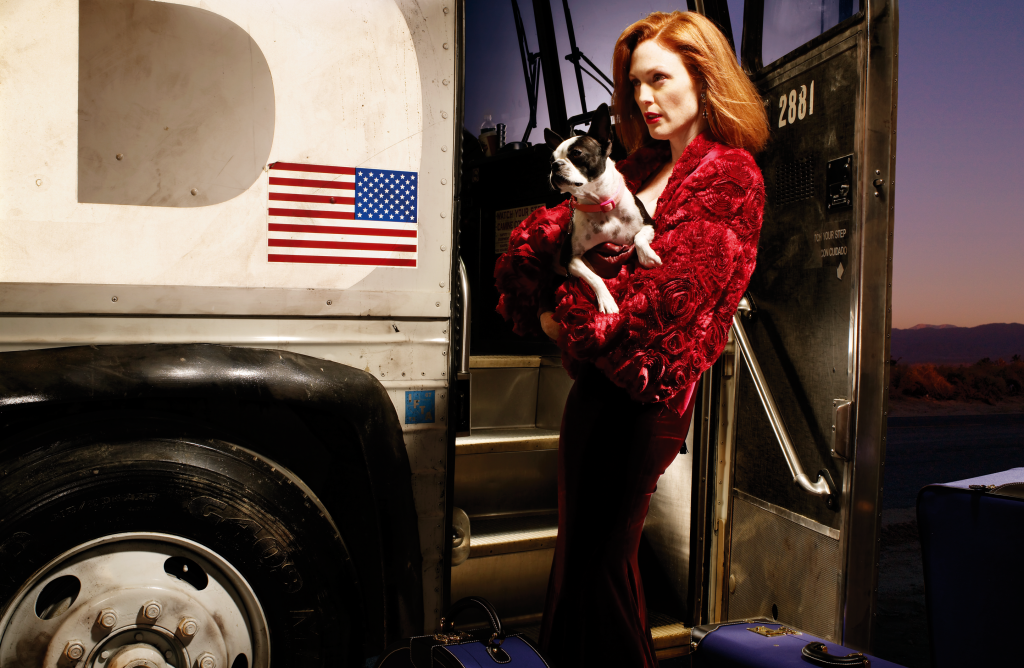Finlay MackayThe Greatest Happiness

Finlay Mackay shuffles across to my table clutching a red apple and a slightly battered BlackBerry, and within moments is discoursing with great eloquence about both his photography and the energy and anguish that is central to everything he does. Actors, photographers, artists and philosophers punctuate his conversation, and certain names are repeated again and again. Martin Parr, Garry Winogrand, Alfred Hitchcock, Gregory Crewdson, Jeremy Bentham, the Coen Brothers and Gustav Adolf Mossa are the protagonists in the drama of Mackay’s inspiration. These lynch-pins of photography, cinema and philosophy lend Mackay’s conversation genuine substance and make this much more than a pleasant, rambling chat about contemporary photography.
Before long Mackay’s conversation segues effortlessly into a discussion of a recent New York Times shoot inspired by the atmosphere of Sergio Leone’s epic spaghetti western Once Upon a Time in the West. Leone’s film, along with those of director brothers Joel and Ethan Coen, inspired Mackay to produce a series of photographs resembling moments of high dramatic tension in cinema. Mackay invited a number of prominent actors — including Jeff Bridges, Kelly McDonald, Javier Bardem and Julianne Moore — to pose as part of compositions which together would form a pictorial narrative a little like a movie’s storyboard. These beautifully choreographed scenes have been likened to the work of Canadian photographer Gregory Crewdson and are a wonderful introduction to the work of Finlay Mackay.
In order to photograph the actors, Mackay travelled first to Los Angeles and then to New York. Mackay explains: Although all the characters don’t actually meet or directly affect each other in the shoot, you are supposed to get the impression they are all in the same place. I knew about the shoot for about three months and it took me little time to get my head around it and actually decide which direction I wanted to go with it, but most of the work was done over a two week period when we actually did the shoot. I storyboarded the idea with Kira Pollack, the photo editor at the New York Times, and the shoot actually closely resembles the drawings.
Although the images resemble the storyboard, they were also created by letting the actors play a bit. By that I mean the actual composition was already in my head and we looked for that in the locations but the emotions and acting were decided on the day when the actor got on set and we just had to try and keep them in line with each other and the narrative we had going.
